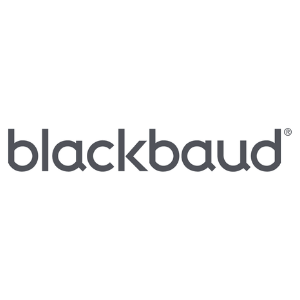Insights
INSIGHTS
All Topics
My Account
The status of UK fundraising 2024
11 Sep 2024by Laura Stanley
We explore the biggest fundraising trends of the last 12 months, including the main drivers of charity income and the growth of artificial intelligence, with insight from a new report from Blackbaud
“The importance of effective fundraising cannot be overstated as we navigate an era marked by economic uncertainty, social change, and severe political events,” begins the latest Status of UK Fundraising report from software providers Blackbaud. The 2020s have been a particularly turbulent time for the charity sector, in which we have seen inflation rise and fall, the cost-of-living rise (and rise), and the risk of charity insolvency grow as a result.
Fundraising in such a climate has been difficult, with financial pressures impacting donors as well as charities, but the sector has continued to find innovative ways to generate income. Findings from the 2024 Status of UK Fundraising report show that “a deliberate strategy to diversify organisations’ fundraising income is essential for growth”, while advances in digital have been instrumental in driving charitable progress.
Indeed, the report found that digitally mature organisations – those which have integrated digital technology across all areas of the organisation – are significantly more likely to say that their income has grown over the last financial year. But there remains good news all round – more than half of all respondents say they either met or exceeded their fundraising targets in the previous 12 months.
But what about the future? The fundraising landscape moves at pace and charities must be prepared to meet new challenges while continuing to deliver impact for the communities they serve. Diversifying income streams, embracing artificial intelligence (AI), and improving data skills will all be crucial to help charities achieve their goals and drive forward their mission.
Below, we explore three of the trends highlighted in the report and discover what they mean for charities in the future.
What is driving fundraising growth?
While 55% of charities met or exceeded their fundraising targets in the previous financial year, the report revealed a slight increase in the number of people who said they did not, rising seven percentage points to 29% between 2023 and 2024.
The report also found that fewer organisations set a fundraising target in 2024 compared to the year before, suggesting that there is an opportunity for charities to develop a more sophisticated strategy to boost their income.
For those looking for new fundraising opportunities, the report highlighted the key drivers behind the 36% of charities who saw their fundraising income grow over the last full financial year. Exceptional gifts were the main driver of income growth, cited by more than two in five (44%) respondents, followed by new and different kinds of activity (37%). Focusing on the supporter experience was the third most commonly identified reason behind income growth, cited by 29%.
Blackbaud’s research also showed that, while charities experiencing a decline in fundraising tended to say grants were their highest source of income, growing nonprofits relied on grants, trust and foundations, and legacies equally, therefore “building a more evenly spread income stream portfolio”.
Are charities making the most of AI?
More than half (57%) of charities are using AI, according to the report, though full adoption of the technology is still in its infancy. Seven in ten charities are using AI to draft copy, while 44% are using it to generate social media content. Only one in ten charities are currently using predictive AI, which can be used to “discover underlying rules and patterns of historical data to make predictions about future events”.
The report suggests that the focus on generative AI is likely due to easier access, lower costs, and less complexity of the tools, such as ChatGPT and Microsoft Copilot. However, it notes that predictive AI can “hold immense potential”.
“Many nonprofits have an abundance of data, and AI can help to maximise the impact of that data by anticipating needs, predicting behaviours, and improving efficiency,” says Blackbaud. “However, it’s evident that predictive tools require more resources and expertise. For most, the key to this impact lies in collaboration. Strategic partnerships with technology vendors or companies supporting social causes can be a successful way for nonprofits to leverage predictive AI sustainably.”
Is data management the key to better fundraising?
Three in five charities said that improved data management would bring the biggest value to their organisation when asked about their fundraising strategies. Data allows charities to better understand their donors, to identify areas of friction within their supporter journeys, and improve their services. When coupled with predictive AI, charities can use data to make more impactful fundraising decisions, reaching out to donors at the right times in the right ways to yield better results.
The focus on data is particularly interesting given that many of the main fundraising challenges identified in the report are related to changing donor behaviour and circumstances. The top concern, cited by 79% of respondents, is the economic situation leading to fewer donations. Almost half (44%) are concerned about being able to communicate their cause in relevant ways, while 39% say keeping up with technological change is a challenge. Retaining and recruiting fundraising talent was the second biggest challenge, identified by 48% of respondents, but this is a decrease on the 57% who said the same in 2023.
“While talent is still a challenge, it’s less of a concern in 2024 than it was in 2023,” says the report. “In turn, tools, skills, public perceptions and changing demands for services all challenge more. In fact, public perceptions of the sector and changing demand of services concern significantly more now than they did in 2023.”
To read the full findings of the Status of UK Fundraising 2024 report, click here.
More on this topic
Recommended Products
Recommended Products
Our Events
Charity Digital Academy
Our courses aim, in just three hours, to enhance soft skills and hard skills, boost your knowledge of finance and artificial intelligence, and supercharge your digital capabilities. Check out some of the incredible options by clicking here.
















